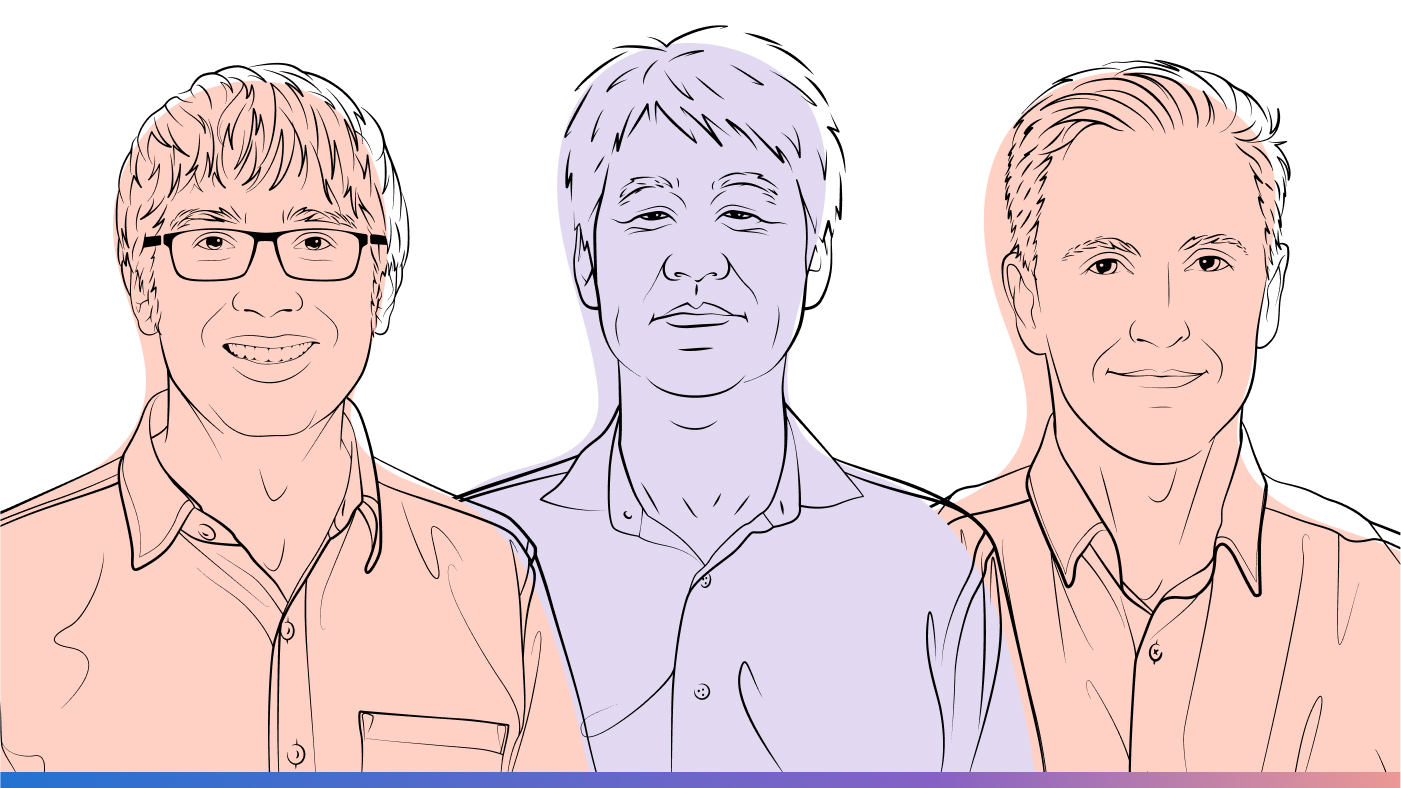By Suzanne Ross
Bigger used to be better, but smaller is suddenly superior. The only problem with small versus big in high-tech gadgets is that our eyes weren’t designed to peer at small screens on mobile phones. Even if we are under forty.
Eric Horvitz, the research manager for the Adaptive Systems and Interaction group, knew that as small devices such as cell phones and PDAs became an essential part of our lives, we’d want them to be more usable. Soon we wouldn’t be willing to accept squinting at the display. So he began urging his group to explore new ways to present information, writing an email in 2000 that urged them to consider developing innovative techniques for small displays: “…there is a tremendous opportunity for leveraging expertise, interests on our team in 3D, animation, novel interaction to make relatively small displays “conceptually” much bigger, easier to use by doing things such as these…creating stereotypical animation sequences that temporarily move viewpoint back, away from objects so as to make the small display a view onto larger spaces, context — but that also gives resolution on details when needed.”
Spotlight: Blog post
Eureka: Evaluating and understanding progress in AI
How can we rigorously evaluate and understand state-of-the-art progress in AI? Eureka is an open-source framework for standardizing evaluations of large foundation models, beyond single-score reporting and rankings. Learn more about the extended findings.
Daniel Robbins took his suggestion seriously. Already well-known in the human-computer interaction field for his unique 3D interfaces, Robbins began working on a way to make information on next generation cell phones more navigable.
“There is an emerging class of devices that are the next generation cell phones — they wrap PDA functionality into a phone,” said Robbins.
 People use these new smartphones to manage their personal information, view Web pages, and keep track of their schedules. However, some of the applications aren’t well adapted to mobile needs.
People use these new smartphones to manage their personal information, view Web pages, and keep track of their schedules. However, some of the applications aren’t well adapted to mobile needs.
“When people are on-the-go their attention is divided. They might be looking at many different things, they’re using one hand, they’re multi-tasking. Usually they only want to glance at the device, issue a command, get the results they’re after, and then focus back on the real world,” said Robbins.
“These displays have heavy constraints in terms of what they provide the user. The screen is low resolution, it’s not very many pixels, and it’s a small screen. If you want to show something large, such as a map or a collection of photos, you have to be clever about how to display them. The only interface you currently have with these devices are the keys and the directional pad.”
Robbins developed an interaction technique that he calls ZoneZoom. He divides a given view into nine segments. Each segment corresponds to a number key. Imagine a map of your city, overlaid with a 3×3 grid. If you want to zoom in on a particular area, simply tap the key corresponding to that area and a smooth animation takes you there. If you want to see even more detail, such as with a map or photo, the current view can be further subdivided into nine segments so that the user can zoom in even closer.
Horvitz is excited about the simplicity and power of Robbins’s design, mentioning, “Dan made a creative, valuable leap of linking jumps between different regions of displayed content to the layout of touchtone keys.”
Horvitz collaborated with Robbins and with software developer Raman Sarin, introducing a parabolic zoom-out and zoom-in sequence during moves that automatically adjust the “height” of the user, based on how far a jump will be between points on a map. “The further one moves between points, the higher up a user rises before sailing back down to a new detailed point, giving increasing amounts of visual context during navigations between increasingly distant regions,” says Horvitz. The team worked to adapt ZoneZoom to an application that shows live views of Washington state traffic.
According to Horvitz, ZoneZoom is an example of a class of designs he calls “foveating displays,” alluding to the way we use our eyes to build up visual images of the world. He said that psychologists have shown that people inspect the world via the keyhole of the fovea, a relatively small region of our retinas that provides high resolution views of a portion of the visual field. Scientists believe that our iconic visual memory pieces together multiple views to provide us with the impression that we are seeing much more than we actually are seeing. “The idea behind foveating displays is to expand the perceived size of displays by feeding fluid visual sequences to users’ visual working memory, such as zoom-outs during jumps among different regions,” said Horvitz.
With ZoneZoom the user gets a feeling of flying over the information space, zooming in for a close look, flying back out to get the larger picture and identify where they want to go next, and then zooming in to a new location. While viewing a Web page, map, or some photos, the hope is that your mind will forget that your eyes are looking at a teeny, tiny display.
A typical way of moving around the small screen in existing applications is to scroll. But scrolling requires a user to concentrate on the display during the scroll operation. Having to concentrate on a small display while walking quickly through an airport, for example, is not the lowest stress activity.
Because of this, ZoneZoom allows the user to quickly and simply glance at different parts of the content. You can press a button to see a different part of the screen, and then let go of the button to return to the previous position. “It’s the same as moving your head to look at something to the side, and then your head returns to center. You can activate this feature with one-hand,” said Robbins.
In the future, Robbins would like to make the segmentation of information work for other types of content.
“Normally we just divide up the space evenly. We could still maintain a matrix layout where each sub-section is next to each other, but they could be different sizes, so that you could focus on the most important regions. We also want to work with some different ways of transitioning and using animations — such as slower or faster, to find the optimum ways of using this interface. We might look at 3D displays. We’re not there yet, but we’re playing with these different techniques,” said Robbins.





